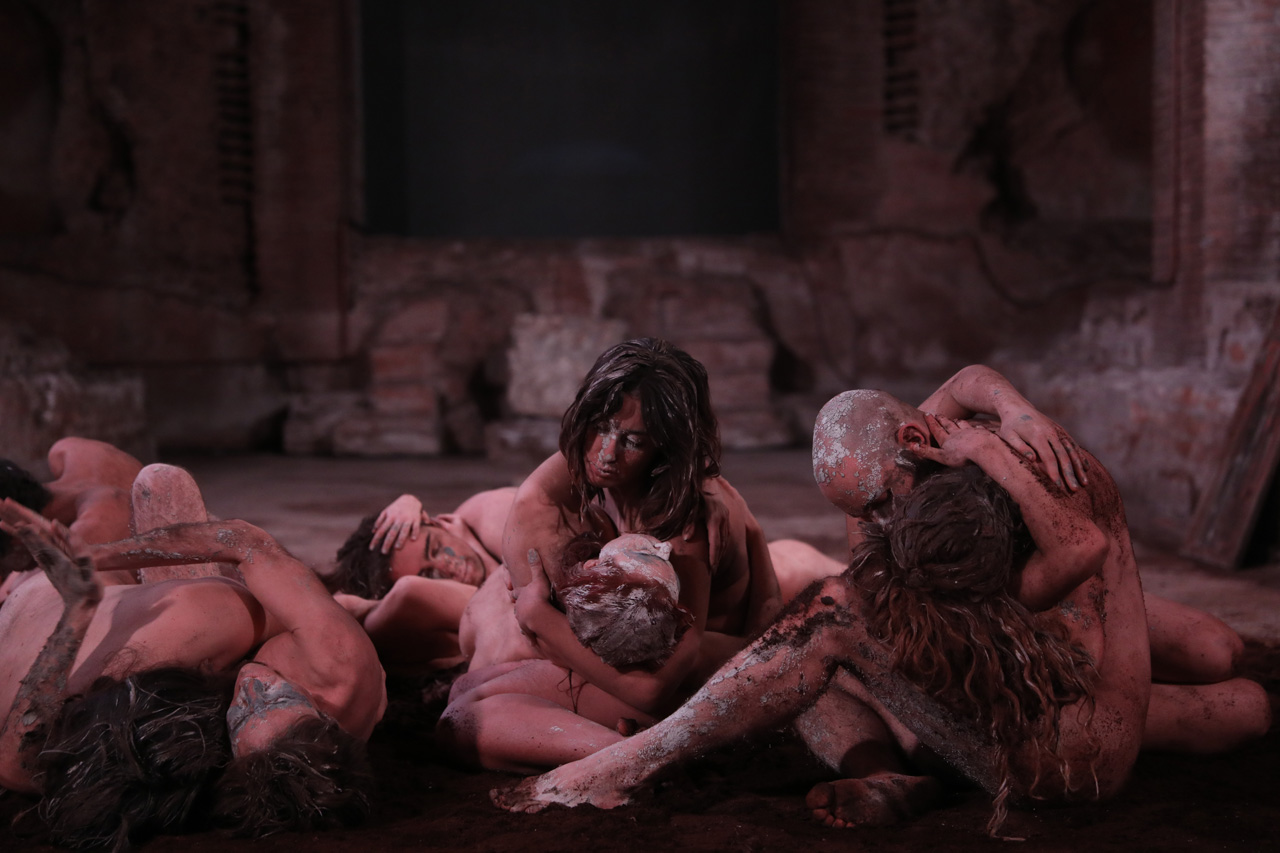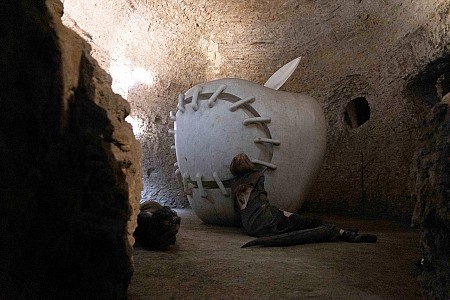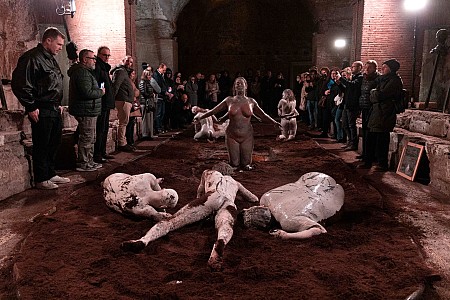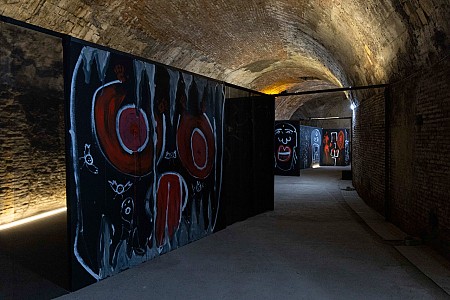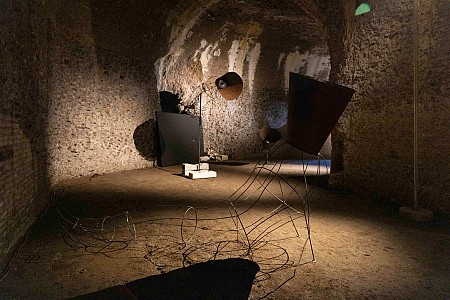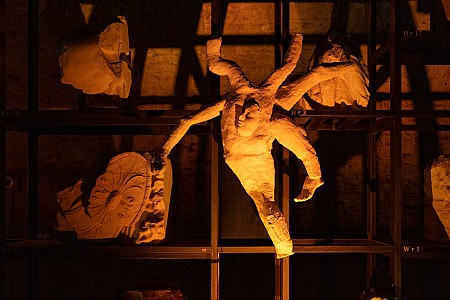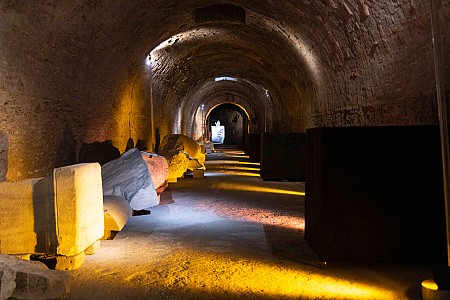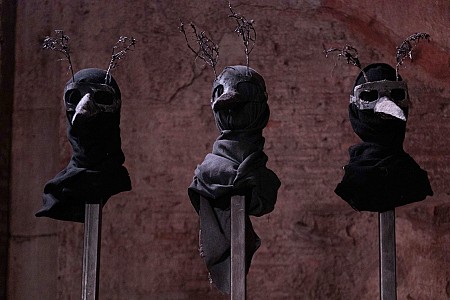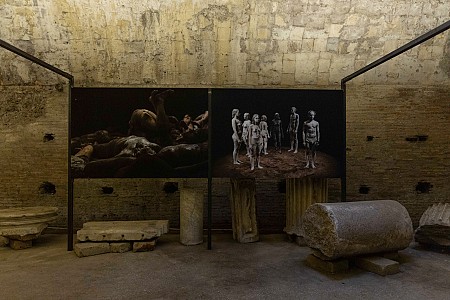Sound art, Sound sculpture, Video art, Photographs, Live Performance.
Exhibition curated by Cristiano Leone.
Monographic exhibition in the subterranean galleries of Caracalla Baths in Rome, 25 February – 23 April
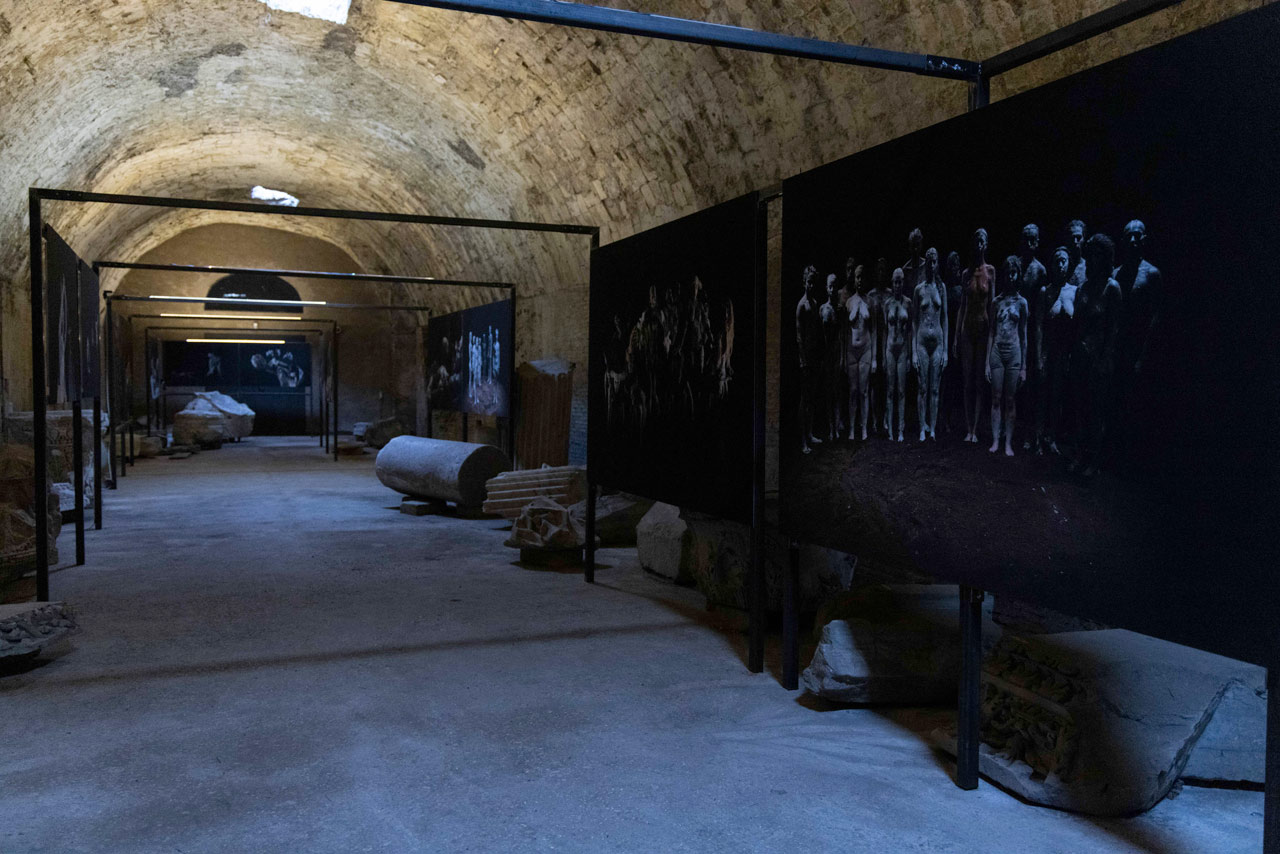
Text from the exhibition brochure by Cristiano Leone, curator
The Greek term mysterion immediately conveys to us the absolute secrecy of ritual practices: ancient etymologies actually contain within them the notion of exigency, for those who practiced the cult, to keep mouth and eyes shut (in Greek, myein). Of the mysterion it was forbidden to speak.
Among the most enigmatic mystery religions, for which no written text has come down to us, the Mithraism stand out. Everything surrounding the Mithraic rites remains shrouded in mystery, and what we can deduce from the rare written evidence affirms the interpretative efforts of scholars studying them. It is with the same imaginative and non-philological approach that Yuval Avital confronts the mystery-school universe. The artist not only sweeps away the cloak of secrecy, revealing all in the very places where such rites were practiced, but also countermands Mithraism’s gender exclusion by fully welcoming the female element, which, in the Mithraic cult was entirely absent – or, in the latest phase, extremely marginalized.
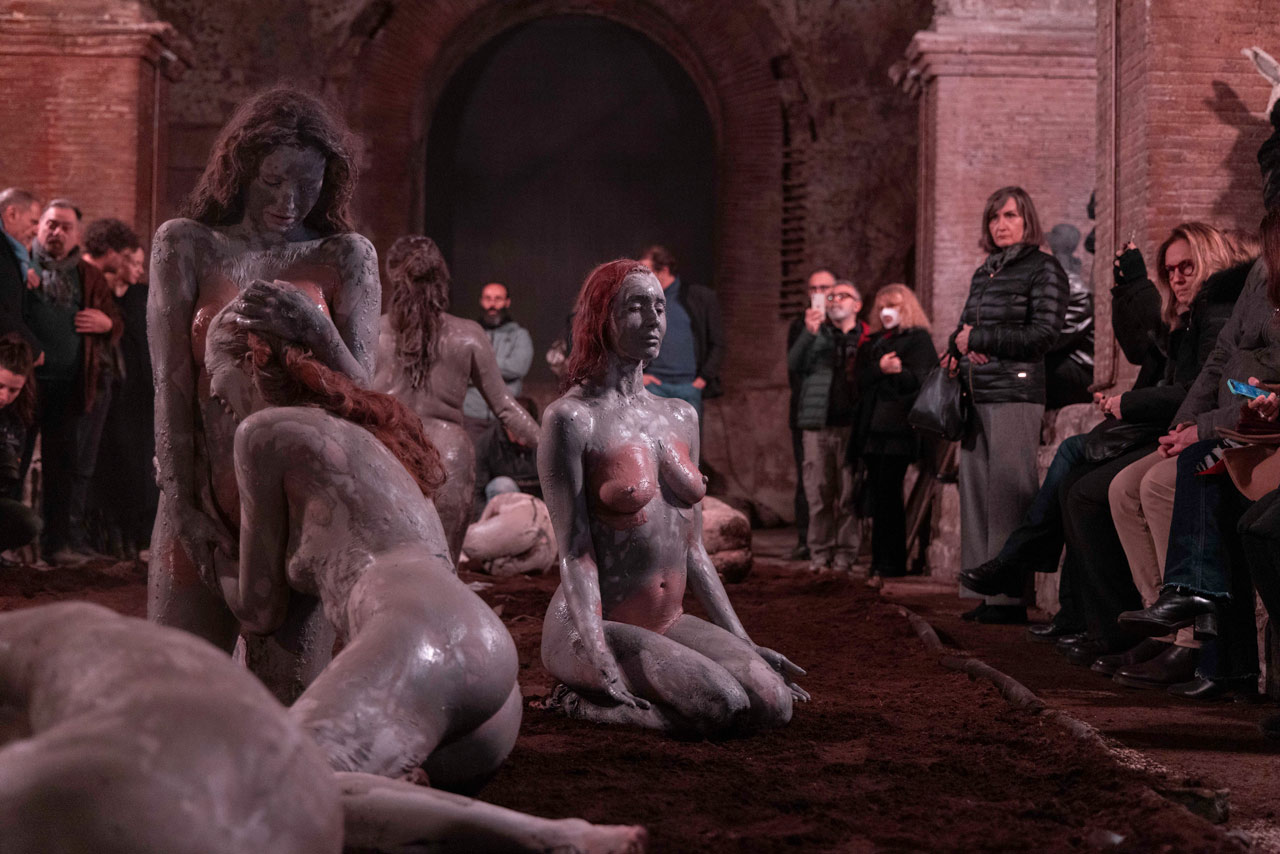
Lessico Animale. Mysterion is a complex work, as much in its contents as in the media used: performance, photography, video, sculpture, sound installation, painting. These installations unfold in the extraordinary subterranean spaces of the Baths of Caracalla. In ancient times the underground swarmed with hundreds of slaves and workers, who kept the complex engineering of the Baths in operation. The labor of these people, whom history has condemned to anonymity, was very often carried out in deplorable conditions, yet that is what allowed citizens to enjoy their bathing pleasures. The stark contrast between the outside and the inside, between otium and negotium, leads Avital to an artistic gesture that shatters the boundaries between the esoteric – occult, inaccessible, secret – and the exoteric – accessible, concrete, public.
With Yuval Avital, the areas below partake of a humanity found only in the rejection of superstructures, in the search for a united past, in which civilization is not a discriminatory force, but a collective goal. The Mithraeum, too, now re-embraces its origins and after so many centuries returns to being a locus of performance.
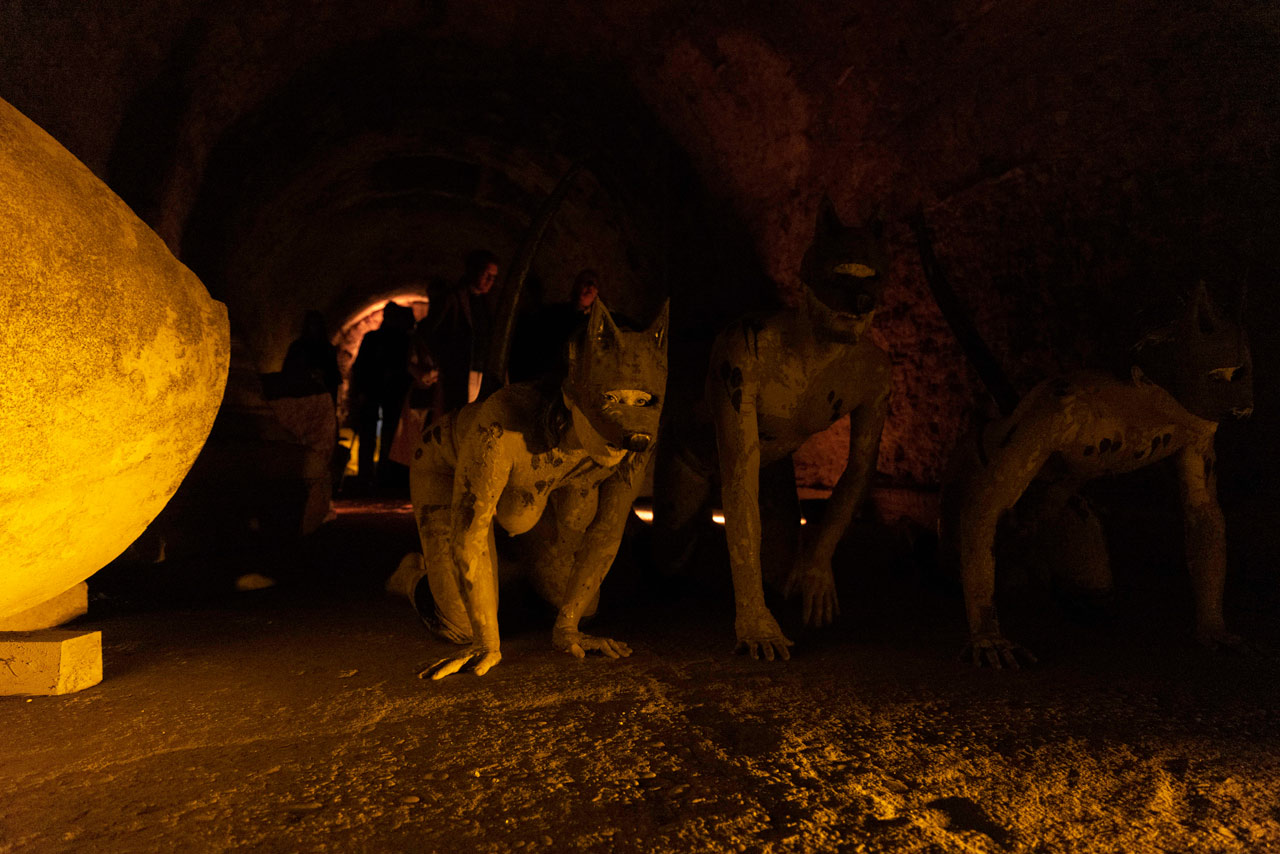
Yuval Avital is an investigator, an explorer of ritual: he researches it, practices it, performs it. And in engaging with it, he studies, documents, and transforms it. For Avital, the archeology of the past is at the same time a prospect for future existence. A ruin is an indicator of a time that never ended, and as such a milestone, a reminder and a pathway toward a future of free and shared spirituality.
Yuval’s work is, therefore, a mise en abyme of the performance within the performance. The visitor/spectator, like the performers, is invited to experience this exhibition as an opportunity to travel into one’s own unconscious through symbols, understood as living and timeless presences. After all, even though symbols may arrive from afar, they find fertile ground in us to take root, act and cause us to react – since, in a certain sense, they exist already within us.
One harbors within oneself, even without understanding or realizing it, the fragments of ancient traditions, harking back to a past so remote as to be impossible to grasp. They belong to the same primordial tradition, the source of all secular traditions, of myths and legends.
Archetypal power is always the same, yet always new, depending on the cultural fabric within which it resurfaces and with which people interact. The symbol, even when it is used consciously, never belongs exclusively to whomever exercises it. It is inherent to humankind and our history in the world.
And thus, the visitor is given the opportunity to activate a collective process that leads back to our origins, to that primordial humus from which we are all generated, antedating that moment when humans decided to detach more and more from animality – which humanity has since regarded with an attitude of master, hunter or prey.
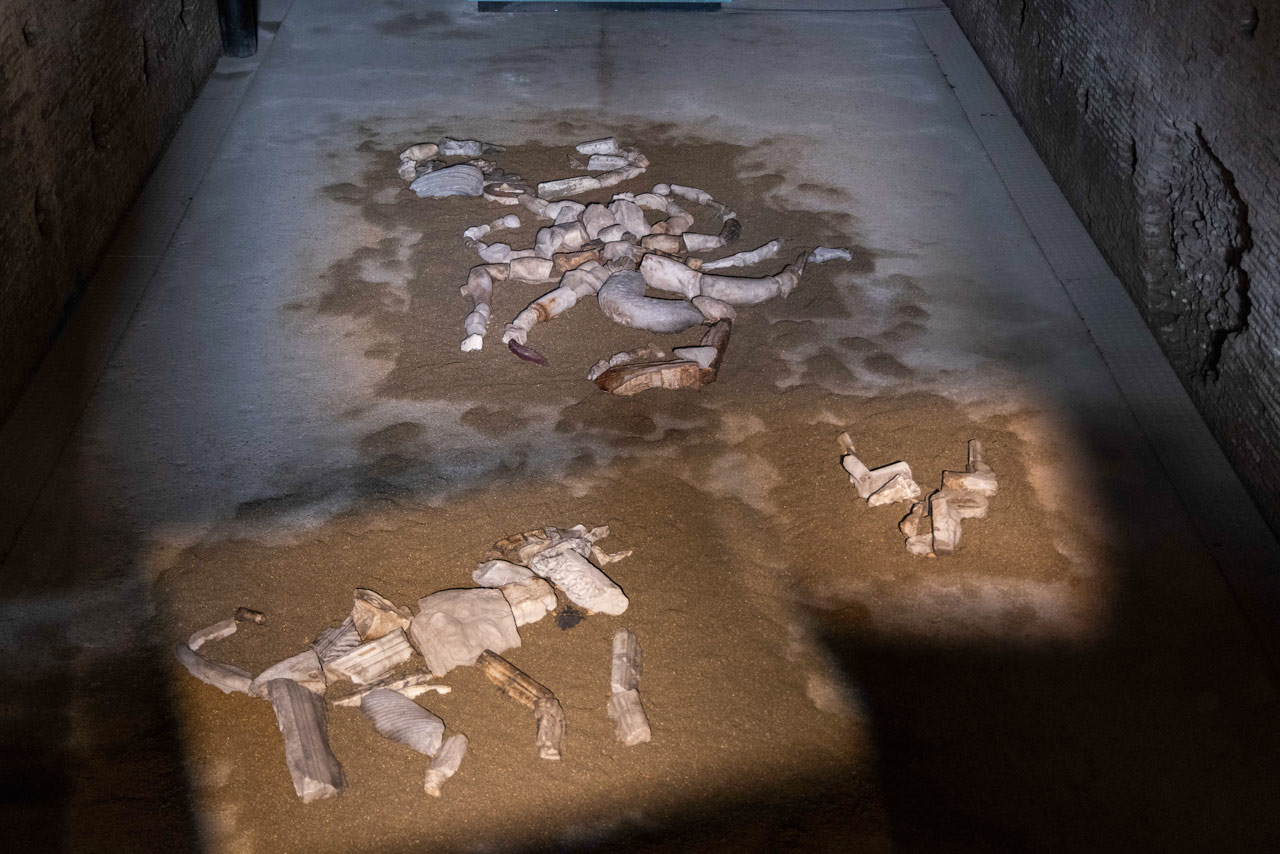
Throughout the Lessico Animale project, both in its prologue and in this powerful new chapter, we discover we are at our most human because, by re-appropriating our roots through ancestral lexicons, we in turn bring forth new symbols.
Yuval Avital’s Mysterion retains the aura of an immemorial ontological fullness, in which both humans and animals share the tragedy of transience, yet at the same time the redeeming power of primeval affinity.
